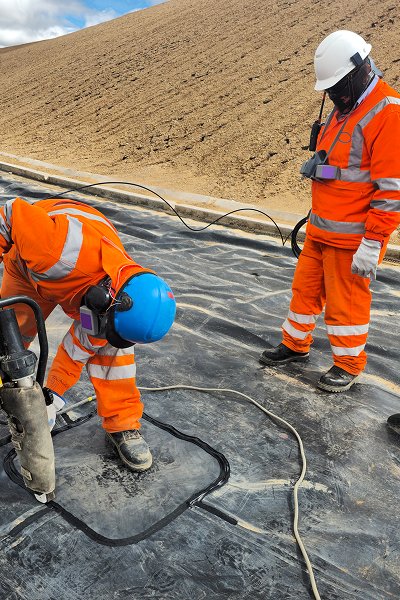"Biaxial" means that it has essentially equal tensile strength in both the warp (longitudinal) and weft (lateral) directions, as distinguished from unidirectional geogrids (which have high tensile strength in only one direction).

Main functions
Enhance the stability of soil structure; bidirectional geogrids have high tensile strength in both vertical and horizontal directions, which can effectively disperse external loads and improve the overall bearing capacity and stability of soil. Its grid structure forms an interlocking effect with soil particles to prevent soil sliding and settlement.
Improve bearing capacity; in soft foundation treatment, bidirectional grids can convert point loads or concentrated loads into surface loads, reduce the deformation rate of the foundation, and improve the bearing capacity of the foundation. Especially in roads, airport runways, docks and other occasions, it can significantly enhance the strength and stability of the foundation layer.
Control road cracking; laying bidirectional geogrids in the roadbed or fill layer can effectively inhibit differential settlement, reduce cracks, and extend the service life of the project. This is particularly important for high fill, soft soil foundation, and highway construction.
Limit the lateral displacement of soil; the regular grid structure can limit the lateral displacement of soil under stress, thereby preventing phenomena such as road bulge and slope sliding, and helping to maintain the geometric shape and structural stability of the project.
Improve drainage performance and anti-scouring ability; the open grid structure and bidirectional grid will not hinder the water flow, but will facilitate smooth drainage, reduce the damage of water flow to the soil structure, and improve the overall impermeability and anti-scouring ability.
Strong environmental adaptability; the biaxial geogrid is corrosion-resistant, UV-resistant, and microbial-resistant, and can still operate stably in high-salt, high-humidity, high-cold or other extreme environments, and is widely used in a variety of climate and geological conditions.
Different biaxial geogrid materials are divided into;
Polypropylene (PP) bidirectional geogrid
Features: light weight, corrosion resistance, good chemical stability, high economy.
Use: widely used in ordinary roads, municipal engineering, drainage layer reinforcement, etc.
High-density polyethylene (HDPE) bidirectional grid
Features: strong impact resistance and outstanding low temperature resistance.
Use: suitable for ports, docks, low-temperature frozen soil areas and other places.
Polyester (PET) coated bidirectional grid
Features: high strength, tensile resistance, usually with PVC or SBR coating on the surface.
Use: suitable for high-strength requirements, such as heavy-loaded roadbeds, airport runways, etc.
Structural form classification
Grid type bidirectional grille
Structure: The apertures in the longitudinal and latitudinal directions are consistent, and the grid is a regular square.
Features: Strong interlocking ability and uniform stress distribution.
Widely used: Suitable for roads, water conservancy, foundation reinforcement, etc.
Rectangular hole bidirectional grille
Structure: The apertures in the longitudinal and lateral directions are inconsistent, generally rectangular.
Use: Used for projects with more reinforcement in a specific direction.
Features: Taking into account both directions but focusing on one direction, similar to "quasi-bidirectional".

Classification by performance level
Ordinary strength type (15-30kN/m)
Applicable scenarios: light-load roads, rural roads, municipal gardens, etc.
High cost-effective, suitable for large-scale paving.
Medium-high strength type (40-60kN/m)
Applicable scenarios: national and provincial trunk lines, highways, railway bases, etc.
Advantages: better fatigue and crack resistance.
Ultra-high strength type (≥80kN/m)
Applicable scenarios: heavy-load traffic, bridge head jump processing, special reinforcement projects.
Strong structural stability, often used in key structural layers.




